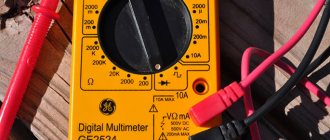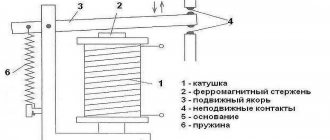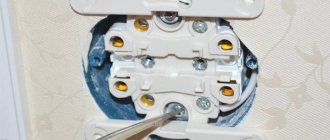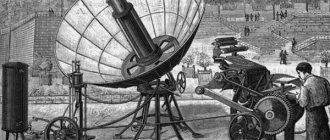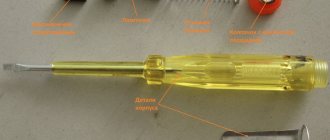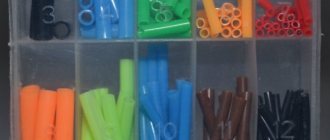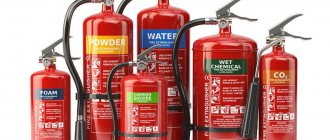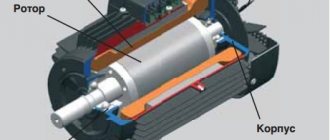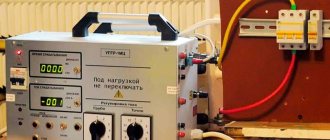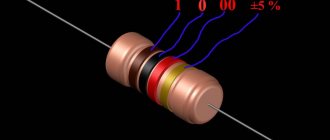We are talking about cables for welding machines. Its structure and, most importantly, the choice of a specific type for specific metal welding work is much more important than it might seem at first glance. Let's start with its functional purpose. The main and only function is the effective supply of electric current to the electrode.
You know that we always prioritize the efficiency of welding work, which is determined by many parameters. One of the most important parameters of this kind relates to the characteristics of a special wire - its cross-sectional area.
This indicator must be kept in mind when choosing a suitable option without fail, as well as several other parameters: total length, characteristics of the local network in terms of possible voltage drop, and much more, which we will talk about now.
Types of cables
Naturally, the main determining factors in choosing a welding cable will be the properties of the machine itself for which it is purchased. The first thing is the current strength in the device. If, for example, it is 189A as close as possible, then the correct choice of wire to the inverter will be a KG 1x16 cable.
Such products are produced in a whole line with different sections. There are many tables on the network outlining exactly what cross-section should be taken at different current values in the devices.
Types of welding cables KG.
It should be noted that all cables that are suitable for welding equipment are not cheap. Therefore, it makes a lot of sense to stop and think about what exactly you are going to do, and what kind of product you will need. There are a great variety of them on offer.
The structural varieties are as follows:
Single-core
This welding cable is made from copper wire, which is distinguished by its elasticity and flexibility. In addition, the distinctive quality of copper as a metal is known - it is an excellent conductor of electric current.
These types are usually used for compact portable inverter devices with low power and corresponding parameters of current strength and other technical indicators.
Twin-core
This configuration has a cathode and anode, which are excellent at conducting electrical current during pulse welding.
Most often, these wires consist of pure copper wire, although there are products made of copper alloys with the addition of other metals that conduct current well. But the base is copper in any case, this is an important condition.
Three-core
This type is produced for complex automatic welding equipment, for example, powerful pipelines for transporting oil, gas or their products.
Such work is considered highly responsible with mandatory requirements for the formation of ideal welding seams.
The marking of wires contains all the technical characteristics of welding work, which greatly simplifies their selection for specific work:
- KS - the product can be used in various types of welding work.
- P - the product is covered with an additional layer of polymer material for additional protection of the conductor. If there is a number next to it, it shows the number of cores in the cable.
- HF – the product can be used at high frequency voltage.
Welding cable marking.
There are other useful properties of welding wires. They have excellent resistance to high and low ambient temperatures with a wide range from -50°C to +50°C, they are resistant to moisture and other aggressive external factors.
Most often, welding wires for an inverter come together as part of a common package in modern welding equipment. But they can be purchased separately as consumables. In this case, you need to look for products with the same markings as they were originally.
Modern braids of copper conductors are produced taking into account a wide variety of requirements and a variety of climatic conditions.
According to their resistance to environmental conditions, all products are divided into two large groups:
- Tropical or antiseptic under the KG-T marking can withstand temperatures up to +50°C in combination with high humidity. In such conditions, there is a high risk of fungal mold or the proliferation of pathogenic microorganisms. If the braid is not specialized, it can easily become exposed in the heat of the desert or in the tropics.
- Cold-resistant or cold-resistant under the marking KG-HL. The polymer braiding in them is absolutely resistant to frost, so the wire does not freeze or crack in the cold down to -60°C, that is, in the harshest climates.
Types of conductors in the design
Among the main cables used to operate the welding machine, the following conductors can be distinguished:
- Single-core conductors are products used in conjunction with a copper current-carrying conductor, created from many thin wires that provide magnetic contact with each other for the correct distribution of the received electricity. Basically, this type of conductor is used to ensure the operation of the inverter.
- The two-core conductors contain an anode and a cathode in the design, so a high-frequency current supply is provided to ensure pulsed welding. And alternating current is used to cut metal in accordance with technological rules.
- Stranded conductor is a special type of cable product, used specifically for automatic welding due to its high power and technical features. This technique is used in places where it is necessary to create an ideal seam in terms of evenness and strength.
As a rule, welding wires are usually supplied with the machine, but if they are not available, it is important to select them individually depending on the type of equipment, its technical and functional parameters.
Safety requirements
Like any other device designed to work with electricity, welding wires are subject to strict requirements and mandatory high safety standards.
The main safety requirements can be divided as follows:
- The cross-section of the core must be able to withstand the required electrical load, that is, the cross-sectional area must be adequate.
- The body of the wire must withstand mechanical stress, as well as the influence of an aggressive chemical environment. These conditions are met using the correct braid made of polymer materials.
- Usually the wires are twisted many times. This fact should not affect the integrity of the braid - it should be elastic and resilient.
Selecting the cross-section of the welding cable
The cross-sectional area of the wire for welding is one of the most important parameters for the efficient operation of the entire device: such key indicators as the maximum maximum current strength and conductivity will depend on the cross-sectional area.
The quality of overall welding work depends on these key indicators - the strength and aesthetics of the formed seam and the speed of operational work.
Wire brand and permissible load.
The cross-sectional area, which refers to small calibers, is approximately 7 mm². These products are designed for inverter devices of compact dimensions, which operate when connected to household electrical networks with a voltage level of 220V.
If you are dealing with industrial automatic welding equipment, you will have to deal with conductive cables with large cross-sectional areas - about 47 - 49 mm².
The line of this kind of products with a wide variety of cross-sections and braids is presented in numerous catalogs and tables that will help you choose the most suitable cable cross-section accurate to the millimeter.
In such catalogs, additional markings and maximum current strength with voltage, cord length and calculated weight of the equipment are indicated.
If you make a mistake and choose a wire with the wrong number of strands and inadequate cross-sectional area, you will get into trouble: at a minimum, it will be an inefficient job in terms of time and energy. And most likely, you will have a short circuit with a breakdown of the rheostat, all equipment and other troubles.
What happens if the cross-sectional area of your wire is smaller than the required size and does not fit the programmed power of the equipment in any way: the electric current will be generated in excess, as a result it will begin to concentrate on the fuse of the device.
You will not be able to work in such conditions, because at the slightest ignition of an electric arc, the device will instantly turn off to relieve the voltage.
Rules for connection and use
When connecting cables to inverter devices, there are a number of rules that you need to know and follow without fail:
- To connect the device at its end there are welding connectors and special tips attached by soldering - plugs for the welding cable. The product should only be connected through them.
- The wires can be connected to each other. This should only be done using special crimping. The main rule here is the mandatory isolation of connections between each other.
- The cable is connected to power type connectors and electrodes through their holders. In this case, it is necessary to remember the polarity, which cannot be changed, except in cases where all current parameters are changed.
- The welding cable for the inverter cannot be used for any other purposes - to pull the device towards you, for example.
- A mandatory requirement is full technical compliance of the cable and the corresponding equipment in terms of rated power and all other parameters.
Design features
The cable design was developed and improved over many years, based on its operating conditions. The conductive core has a round cross-section and is woven from several stranded copper wires. Between the conductive core and the insulation there is a separating layer - a polymer film. If specially developed electrical insulating rubber is used, which prevents flow into the core, then a separating layer is dispensed with.
The design life of the welding wire is determined to be four years. After this, manufacturers recommend replacing it with a new one.
Welding cable cross-section
There is a renovation technology that involves removing worn insulation and applying a new layer of it. This allows you to bring welding wires back to life and extend their service life.
Cable extension: yes or no
This question most surprisingly continues to excite the minds of professionals and has been a hot topic of discussion for a long time.
Some believe that extension should never be carried out, because too long wires with connectors for the welding cable will lead to a decrease in the efficiency and quality of work.
Manufacturers of inverter welding machines prefer not to speak out on this issue. This means that the wires can be extended and the equipment can be used with very long wires, reducing movement of the machine to a minimum.
On the other hand, if the wire is too long, voltage loss may occur. In this case, the arc will become shorter, it will be much more difficult to control, and the overall quality of welding will decrease significantly.
Is it permissible to lengthen
It is more convenient to work with a long wire, but it increases the resistance of the conductor and, accordingly, an additional voltage drop occurs across it.
To provide the required current, the device must be switched to maximum load mode, which causes rapid wear of the device. It is possible to lengthen the cable, including the return wire, but replace it with a thicker one with a larger cross-section.
Then the losses on the conductor will not change, but the mass of the cable will increase. Since the resistivity is constant for a particular metal, doubling the length of the conductor will require doubling the cross-sectional area.
In this case, it is necessary to correctly connect the plugs and terminals to the cable. They must be connected by crimping or soldering followed by insulation.
There is no clear unambiguous prohibition on lengthening from manufacturers. Special requirements for ensuring current are placed on electrode holders. However, many experts do not recommend extending the cable, stating that the device may fail, and the manufacturer will void the warranty.
Criteria for selecting a cable for welding
The main criterion for selection is the stability of the welding process. This stability is influenced by many things - not only the indicators of the current and the mains voltage source, but also many parameters of the welding and mains wire.
Therefore, when choosing, we think about the correct length, the correct cross-sectional area and braid material - all three parameters are of serious importance. If, for example, the welding current reaches high values, the wire must be selected according to a certain type and material.
We have already said that all wires for welding machines have their own electrical resistance values. It can be calculated using tables, this is not a problem. For example, an aluminum conductor has a higher resistance coefficient than a copper conductor.
As a result of this difference, the aluminum wire for a power extension cord will require many more kilograms than copper wire. And the cross-sectional area of aluminum should also be larger.
Current load table.
Taking into account such facts, the extension of network wires is carried out using copper products in two versions: two- or three-core, with a length not exceeding forty meters. As for the cross-sectional area, it should be greater than 2.5 mm².
Choosing welding wires is a little different from choosing network wires. Products for welding are selected taking into account the strength of the output current; here, stranded copper grades with highly flexible braiding and improved insulation have a huge advantage.
The most popular wires for inverter welding are sold under the marking KG, which means flexible braid, or KOG, which means very flexible braid. These brands are distinguished by excellent insulation in several layers with an outer braid made of rubber materials.
The standard wire length is approximately 2 - 3 meters and rarely longer. This is explained by the fact that every extra meter of wire length will lead to an increase in cross-sectional area by about one and a half times, since the resistance increases significantly and the wire begins to heat up.
The conditions of future work must be taken into account in advance without fail, because it is necessary to choose the most adequate type of insulation and resistance to mechanical damage, temperature conditions or aggressive chemical external environment.
The ability to read and understand welding cable markings can help you in this difficult matter:
- If the marking looks like KG T 1x16, then this means a single-core product with a core cross-sectional area of 16 mm², in a tropical design with resistance to temperatures from -10 to +55°C.
- Marking KOG HL 1x50: single-core product with a cross-section of 50 mm², frost-resistant and heat-resistant to temperatures from -40 to +50°C. In this case, the heat resistance index is not present.
The length of the wire and cross-sectional area must be consistent with the strength of the electric current and other parameters.
Cable requirements for a welder
Firstly, if you choose a cable to connect the ground clamp and electrode holder to the welding machine, you need to consider the following operating features:
- Welding machines of any type produce significant currents - from 10-20 to 400-500A. At the same time, household inverter-type welding machines are usually designed for 200A with a deviation of 50A in each direction, and industrial welding transformers produce currents of 400A.
- A welder encounters a wide variety of tasks in his work, from simple seams in convenient positions to welding products of complex shapes or in hard-to-reach places.
- In addition to various tasks, you have to cook both in very hot rooms and in the cold in winter.
- To transport the equipment, the cables are rolled up.
It follows that the cable must meet the following requirements:
- The power welding cable must be flexible to ensure ease of manipulation of the electrode or torch for a semi-automatic welding machine.
- The conductor must have thick insulation and be resistant to aggressive environments, shocks and breaks.
- To work in cold conditions, the conductor must be frost-resistant.
- Welding of metals occurs with low voltage but high current, so there is a separate requirement for the cross-section of wires for connecting electrode holders and ground. This means that the wire must be thick to minimize voltage sags and losses.
- Must withstand repeated bending and winding/unwinding during transportation.

